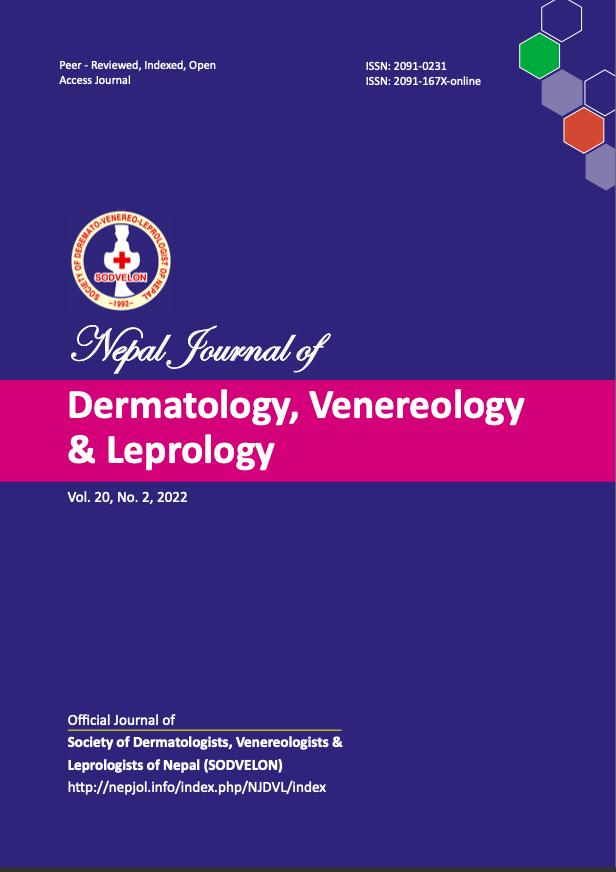Cutaneous Manifestations In the Patients With Covid 19: A Prospective Clinical Analysis
DOI:
https://doi.org/10.3126/njdvl.v20i2.47631Keywords:
Erythema nodosum, Pandemic, Skin lesions, UrticariaAbstract
Introduction: The COVID-19 pandemic has become a major health care issue worldwide. The surge in cases was seen in the second wave, with more people getting hospital admissions. An accurate and rapid identification of cutaneous manifestations is vital to early diagnosis and better prognosis. The aim of the study was to determine cutaneous manifestations in patients with COVID-19.
Materials and Methods: This prospective observational cross-sectional hospital-based study was conducted from June 2021 to September 2021. Patients admitted to the hospital were examined by the dermatologists. All inpatients diagnosed with COVID-19 with RT PCR were included. Types, patterns and how the skin lesions changed its course during illness were recorded. Ethical clearance was taken from IRC. Statistical analysis was done with SPSS Version 20.0.
Results: A total of 452 COVID-19 RT-PCR-positive patients were enrolled out of which 97(21.5%) had skin lesions. Out of 131 comorbid patients, 40(30.5%) had skin lesions. Urticarial wheals and erythema nodosum were seen in 21(4.6%) each and were the most common manifestation, followed by exanthema in 17(3.8%).
Conclusion: Study showed maximum patients with COVID-19 had urticaria and erythema nodosum. It is important to know the types of skin lesions for early diagnosis. In order to prevent the spread patient can be sent for investigations on time. More elaborate studies with multicenter involvement are recommended.
Downloads
Downloads
Published
How to Cite
Issue
Section
License
Copyright (c) 2022 Society of Dermatologists, Venereologists and Leprologists of Nepal

This work is licensed under a Creative Commons Attribution 4.0 International License.
Copyright on any research article is transferred in full to Nepal Journal of Dermatology, Venereology & Leprology upon publication. The copyright transfer includes the right to reproduce and distribute the article in any form of reproduction (printing, electronic media or any other form).




